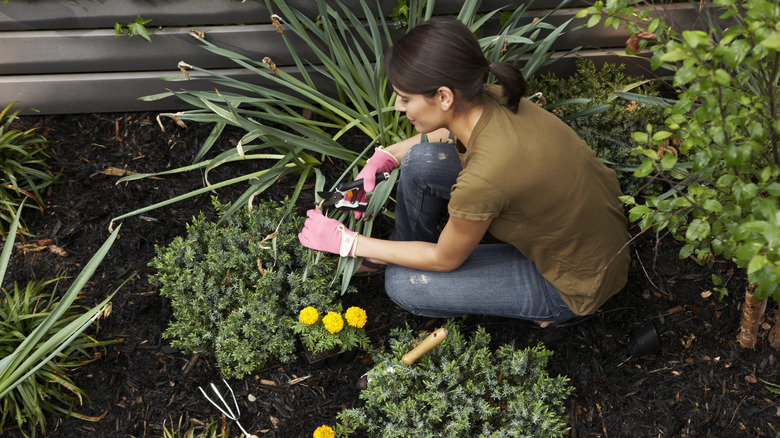We all want pristine, healthy, well-fertilized lawns. But when it’s not the season for it, the effects of fertilizer can be detrimental. Fertilizing your lawn too early is likely to do more harm than good. If it’s too cold outside, your fertilizer won’t make an impact on your grass. Nutrients like iron and potassium will go to waste because plants can’t use them until things warm up. Worse still, early fertilization might discolor your lawn.
Although many of us yearn for a garden with healthy soil, assessing the right time to start planting and fertilizing is half the battle. As winter turns to spring, those with a green thumb may get ahead of their excitement and begin fertilizing for the warm weather to come. But if you’re too quick with your fertilizer, it could cause some major problems for your yard. Here are a few major consequences that can come from fertilizing your lawn too early in the season — and also how you know when you’re good to go.
Nutritional deficiencies, cold damage, and off-color areas

Nutritional deficiencies in plants are one of the most significant ways early fertilization can cause damage. Since soil temperatures are too cool for your plants to access every nutritional benefit of fertilizer, they are unable to absorb them and end up growing in extremely poor conditions. Symptoms such as the yellowing or browning of leaves are often caused by early fertilization, and this will stunt the growth of plants and flowers until they can no longer survive. Similarly, discoloration can occur on patches of the garden due to a lack of iron. The environmental surroundings of our gardens can also affect how they grow. In cold seasons, grass becomes dormant, therefore unable to provide the essential nutrients that plants depend on.
You might not notice the problems right away. If you fertilize early, you’ll encourage your grass and other plants to divert all their energy into top growth instead of root growth — that might not sound bad, but in the springtime, when your plants have just shaken off their winter frost and are in a growing mood again, you want them to be prioritizing root growth. Robbing your plants of these important spring months of root development will weaken your lawn or garden in the long term. Rather than waste your time, money, and effort, it’s better to know the right time to start fertilizing.
When is the best time to start fertilizing?

Much like fertilizing too early will cause damage, fertilizing at the right time will have a significantly positive impact on your garden. Some experts claim the best time to start fertilizing is mid-to-late spring, meaning somewhere in between April and May. Others will encourage you to fertilize as early as February, but lawn and garden care isn’t a one-size-fits-all affair. Judge for yourself based on how your grass is growing, how moist the soil is, and how cold the climate is. If it’s not warm until May and you haven’t even had to mow your lawn yet, think twice before dumping fertilizer on it. If you want a general rule of thumb, though, during the mid-to-late spring season, temperatures reach the perfect degree to provide nutrients to the plants while discouraging weed growth. Thankfully, effective fertilizer creates a nitrogen-rich soil that makes it less appealing to growing weeds.
It’s best to keep an eye on your garden once the grass begins turning green, as it’s likely to be dry and colorless from the fall and winter. While you shouldn’t start fertilizing until spring, keeping an eye on your garden as the weather gets warmer is the best way to ensure you fertilize at the appropriate time. Just like you, your grass will benefit from patience and use its conserved energy and strength when spring arrives.




